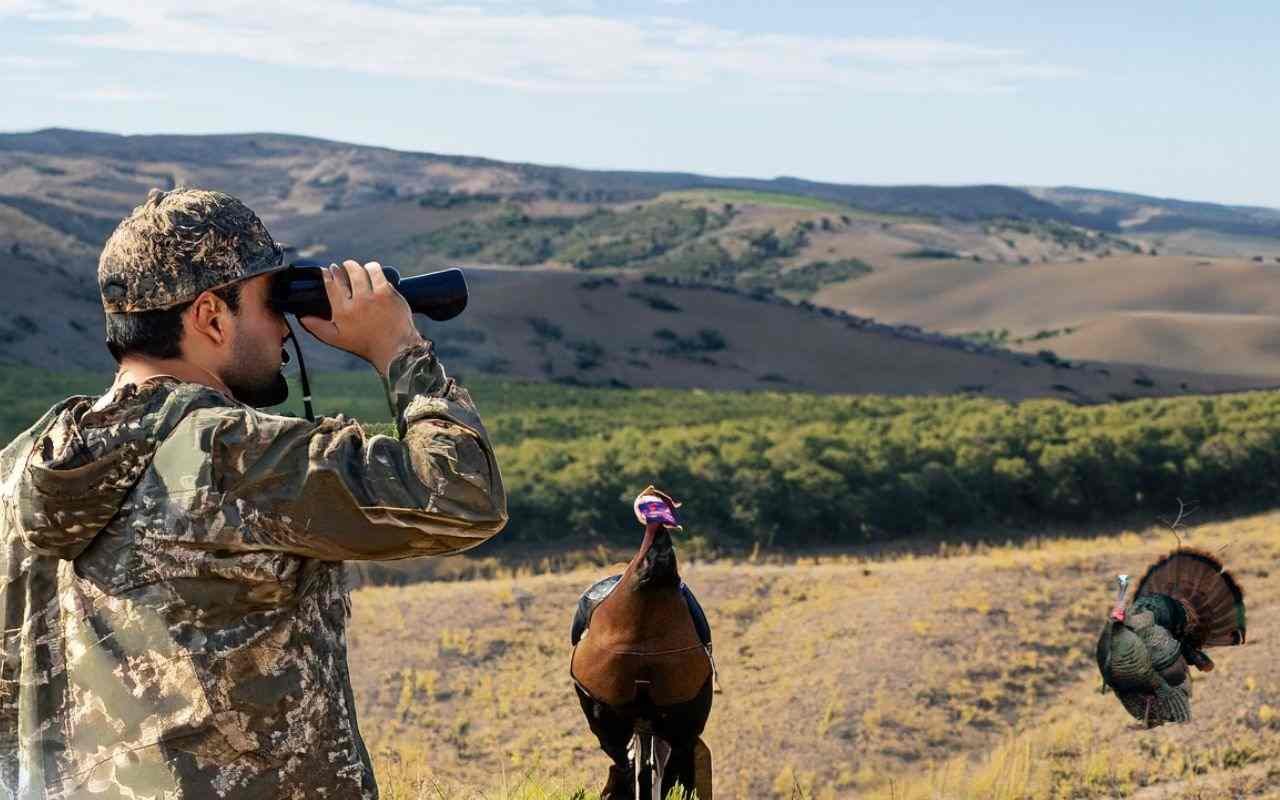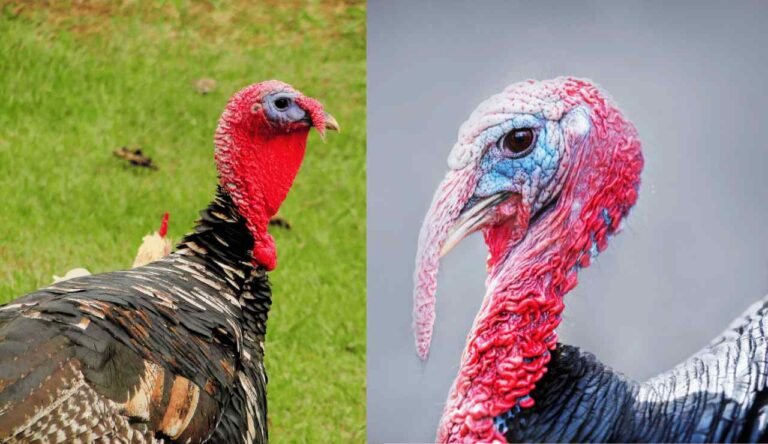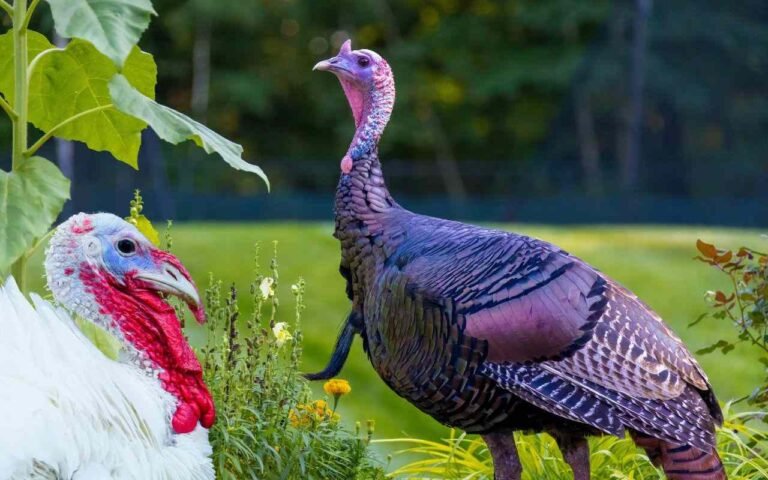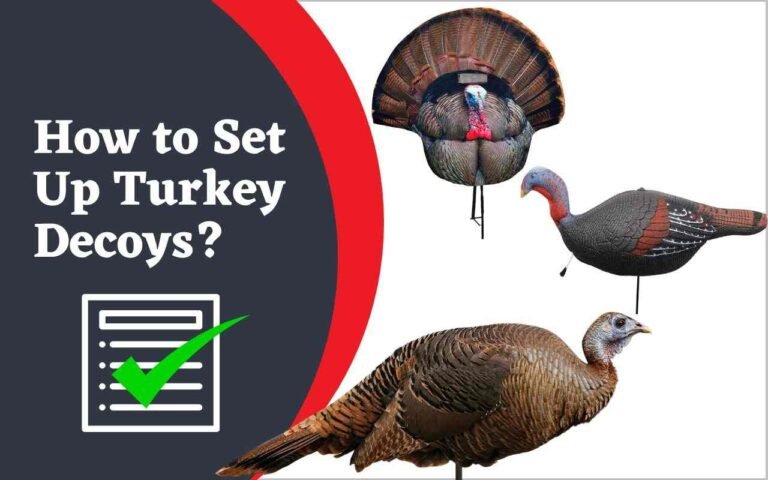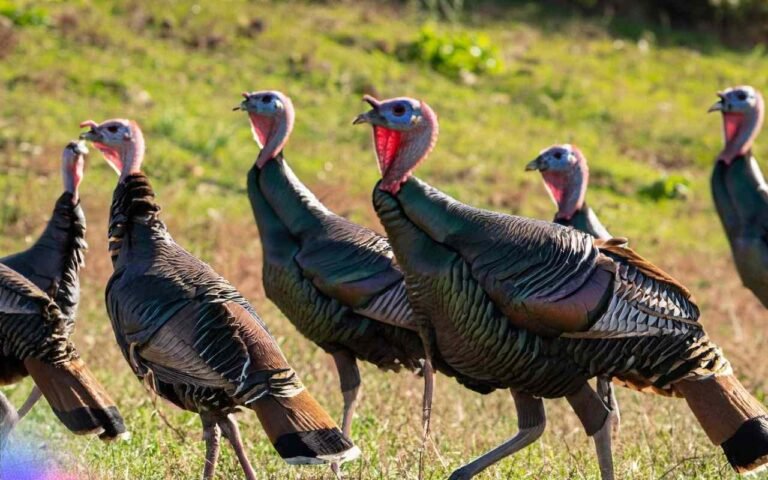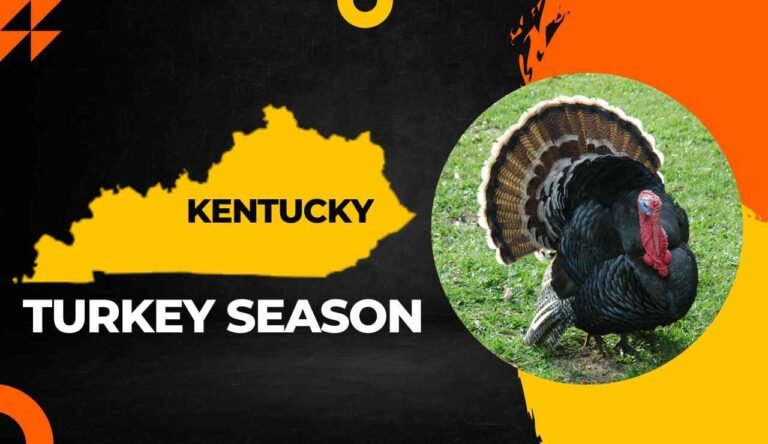How To Go Spring Turkey Hunting? Mastering Spring Turkey Hunting: Top Tips and Strategies for a Successful Hunt!
For turkey hunters, the approach of spring heralds exciting times. It’s peak hunting season when toms are attracting hens by gobbling, bringing the woods to life. However, there are difficulties associated with spring turkey hunting. Even experienced hunters might get rapidly frustrated by wary and secretive birds.
Successfully navigating the spring turkey woods demands careful planning, perseverance, and expertise. You may significantly improve your chances of bagging a tom by comprehending turkey behavior patterns, studying roosting locations, learning calling tactics, and setting up effective ambushes. Let’s examine the essential strategies and advice for a successful spring turkey hunt.
How To Go Spring Turkey Hunting?
Spring turkey hunting requires knowledge of bird breeding habits. Toms grow more vocal and aggressive to attract hens, making early mornings and late afternoons ideal hunting periods. Successful scouting requires observing their roosting routines. Getting the right gear, such as turkey calls, decoys, camouflage clothes, a face mask, gloves, and quiet boots, is essential. Preseason reconnaissance identifies roosting trees and feeding locations for optimal ambush setup. To draw gobblers, it’s essential to become proficient in calling methods including yelping, clucking, purring, and cutting. Mark the shot and ethically follow the fowl. These methods will improve spring turkey hunting success.
Understanding Spring Turkey Behavior
Understanding their behaviors and tendencies during breeding season is the first step to mastering spring turkey hunting. Early in the spring, male turkeys known as toms or gobblers start scouting for hens to mate with.
To attract mates, toms become considerably louder and more aggressive. In the early mornings and late afternoons, you can hear their raucous gobbling reverberating across the woods. For this reason, the best time to hunt for spring turkeys is usually during the day.
Turkeys like to spend the night on trees and descend to eat in the morning. You may learn a lot about their mobility habits by keeping an eye on where they roost.
Toms are loud throughout the day, although they seem to be more receptive during the early fly-down period. Late in the day, when the turkeys begin to get ready to roost once again, is another excellent calling time.
Essential Gear and Equipment
An empty tag is guaranteed if you enter the turkey woods without the necessary equipment. The following is a list of the essential tools for successful spring turkey hunting:
Turkey calls are required to attract gobblers during a hunt by simulating the sounds of hen and baby turkeys. Slate, box, and mouth calls are a few of the several call kinds. Try to be diverse.
| Gear and Equipment | Description |
|---|---|
| Turkey Calls | Simulating hen and young turkey noises using slate, box, and mouth calls |
| Decoys | Jake or hen decoys with realistic-looking feathers and a fan |
| Camouflage | A hunting environment-appropriate camouflage wardrobe |
| Face Mask and Gloves | To conceal any visible skin and prevent arousing the fowl |
| Boots | Footwear that are silent and light so you may go through the wilderness quietly |
| Choke Tube | Specialized choke tubes for exact shot patterns |
Decoys: Attractively positioned lifelike hen or jake decoys may entice gobblers within shooting range. Key components include a fan and lifelike feathers.
Camouflage: Hunting for turkeys requires the ability to blend into the environment, or camouflage. Whether it’s broad fields or thick brush, choose camouflage appropriate for the environment.
Face Mask and Gloves: Cover up any exposed skin that can startle a turkey with a face mask and gloves. You may avoid detection by wearing a lightweight mask and gloves.
Boots: Silent, lightweight boots let you move quietly through the forest. Brush pants make your motions even more quiet.
Choke Tube: Specialized choke tubes offer the precise shot patterns required for moral turkey shots. Look for tubes designated for hunting turkeys.
You’ll be prepared to begin your spring turkey hunt with the correct tools if you have them.
Scouting and Roosting
It’s time for preseason scouting after you have an understanding of turkey behavior and the necessary tools. The secret to successful turkey hunting is figuring out where the birds roost.
Turkeys like returning to the same locations each night to roost. You may set up just where they feel most comfortable if you use spring scouting to identify their favored trees.
How can you locate roost locations? Look for sites that have plenty of big trees, a big view, and are near open feeding grounds. In the evening, listen for gobbling and look up for flying turkeys. Examine any footprints or droppings near potential roost trees.
Once you’ve located a turkey roosting hotspot, you can plan the ideal ambush since you’ll know precisely where the birds will land in the morning.
| Scouting and Roosting Tips | Description |
|---|---|
| Listen for Gobbling | Pay attention to the gobble in the morning and the afternoon |
| Identify Roosting Trees | Find large trees with a good view, close to open feeding places. |
| Look for Footprints and Droppings | Look for turkey activity indications close to suitable roost trees. |
| Plan the Ideal Ambush | Set up a clear shot path within 100 yards of a hotspot for roosting. |
Calling Techniques
Calling is one of the most important abilities to perfect during spring turkey hunting. The secret to getting lovesick gobblers to come rushing your way is effective calling.
There are several calling techniques, but mastering the yelps, clucks, and purrs of ordinary hens will work. Start by making gentle, plausible calls from your covert location. imitate an inquisitive hen approaching an attentive tom.
In order to create a genuine back-and-forth, react to each sound that the tom produces and equal his intensity. Err on the side of less calling is more since too much calling would make them suspicious.

Try adding some anxious yelps, clucks, and cutting to resemble a hen in danger if you don’t hear anything back after 30 minutes. Even reluctant toms may be attracted by this strategy.
Just as crucial as pitch control is cadence. Calling should be used rhythmically with suitable breaks in between. Your calling skills will become more effective with practice, bringing in more spring gobblers each season.
| Call Type | Description |
|---|---|
| Yelp | A realistically soft hen yelps to attract the tom's attention. |
| Cluck | Gentle clucks that like an approaching curious hen |
| Purr | Purring softly to evoke feelings of contentment and calm |
| Cutting | A quick, excited string of clucks that resemble an upset hen. |
| Gobbler Call | To confront others and imitate a dominating tom, gobble noises |
Setting Up the Perfect Ambush
After locating those important turkey roosting locations and improving your calling technique, the following step is to prepare the optimal ambush place.
On any turkey hunt, choosing your setup location may be the most crucial choice you make. Once again, finding roost trees is the first step. Set up ideally 100 yards or less from a potential fly-down location.
Position yourself behind a tree, bush, or blind, with a clear view of the area around you. Make sure the predicted turkey approach route is free for a shooting lane.
To maximize your chances of luring gobblers, use realistic decoys. Avoid placing the decoy directly on a perceived trail and instead place it where the bird would normally dine.
Keep your eyes open and be ready to take action when the tom eventually moves within your area of control. On Thanksgiving Day, persistence and strategic placement will pay off.
| Ambush Setup Tips | Description |
|---|---|
| Position Behind Cover | Stay concealed in a blind with a good view, a bush, or a tree. |
| Use Realistic Decoys | Place decoys away from paths, where turkeys often eat, and in such areas. |
| Watch for Turkey Approach Route | Be mindful of the anticipated turkey approach path before you shot. |
| Be Patient and Ready to Act | As soon as the tom reaches your shot range, be ready to take action. |
Hunting Ethics and Safety
It’s important to include ethical hunting methods while talking about how to hunt effectively. In the turkey woods, ethics and safety should always come first.
Respect the animal and the area you are hunting in. To rapidly and humanely put down a turkey, just fire close-range, fatal rounds. Respect all local laws and refrain from unethical actions that can damage the reputation of hunters.
The standard safety guidelines are followed. Be sure of your target and what’s beyond it, treat every weapon as if it were loaded, and don’t pull the trigger until you’re ready to shoot.
When traveling between locations, wear blaze orange and be mindful of nearby hunters. The hunt may be enjoyed by everybody with moral and responsible behavior.
Strategies for Challenging Situations
Even the most experienced hunters often face difficulties while hunting spring turkey. Here are some strategies for dealing with upsetting circumstances:
Windy days – Turkeys are especially attentive on windy days, and the wind may carry noises and odors far and wide. To get their attention, set up your location downwind of potential travel corridors and use a gobbler decoy to fool them.
Spooked Birds – Birds that are frightened by loud sounds, moving objects, or other hunters might become timid and unresponsive. When they get back into their habits the next day, go back out and come back before fly-down time.
Stubborn Gobblers – Some toms won’t go close enough, often because there are many of hens around. To simulate competition, try summoning and chopping the Jealous Hen. Eventually, patience and decoys could prevail.
No Gobbling – If toms have completely ceased gobbling, they have probably located hens and mated. Adjust your calling techniques and concentrate on places where you can still hear birds singing.
Even when the going gets rough, being adaptable, patient, and determined can help you bag a bird.
Monitoring and Recovery
| Post-Shot Tracking and Recovery Tips | Description |
|---|---|
| Mark the Shot Location | Take note of the precise location of the shot's release for tracking |
| Trace Blood Trails | Follow any blood trails and mark the way with orange flagging. |
| Be Diligent and Patient | Continue your meticulous and thorough search for the fallen turkey. |
| Be Ethical and Respectful | Make that monitoring and recovery are done in an honest and responsible manner. |
Tracking and recovery come next after a good shot on a spring gobbler. After the shooting, make a note of the precise position and pay great attention for any noises of movement. Before proceeding, give the bird some time.
Look attentively for broken twigs, dislodged leaves, feathers, and blood specks in the direction of the expected passage. Set up orange flags to indicate the blood path.
The turkey should ideally pass away in plain sight. If they walk out of sight, continue cautiously and gently forward down the route. Rarely does a turkey suffer a fatal injury before giving up.
If a trail becomes cold after extensive searching, gently leave the area and come back later, when the turkey could still be alive but concealed nearby. Be diligent and patient while retrieving ethically.
Conclusion
The most thrilling and gratifying period of the year for dedicated turkey hunters comes in the spring. Although spring gobbler hunting has its own set of difficulties, perseverance and careful planning will pay off.
You should continue to hone your woodsmanship abilities throughout the turkey season. More memories will be created in the turkey woods as a result of scouting, excellent calling, and inventive ambushes.
Be prepared to herald in the dawn this spring with a thunderous gobble. With the advice given here, you’ll have the know-how necessary to quickly get your tag filled. Get outside right away and experience the excitement of a spring turkey hunt!
Happy hunting and be careful. Please share your springtime experiences in the comments section.
Frequently Asked Questions
What times are best for spring turkey hunting?
The best times to hunt for spring turkeys are in the early morning around fly-down time and the late afternoon when the birds begin to roost again.
How do you call in spring turkeys?
Use realistically loud hen yelps, clucks, purrs, and chopping to imitate turkey noises. Begin softly and turn up the volume as necessary. Frequently respond to a tom that is gobbling. remarkable diversity, realism, and cadence.
Where should you set up to hunt roosted turkeys?
Get as near as you can to a well-known roost location while staying undetected and providing a clean shot route. The optimal range for an ambush is 100 yards or less.
What is the most effective spring turkey decoy setup?
Use a one or two hen or Jake decoys to draw the attention of coming gobblers while remaining outside of their usual route. Make it seem organic by feeding turkeys. Do not overuse decoys.
How do you relocate a downed turkey after a shot?
Mark the precise spot where the shot was fired, carefully trace any blood trails, and use orange flagging to keep track. If the route becomes chilly, keep a vigilant eye out for activity and assume the bird will be nearby.
Sources:
- Florida Turkey Season 2025-2026: Latest Hunting Dates, Licenses & Rules Available! - October 16, 2025
- Delaware Turkey Season 2025-2026: [Everything You Need to Know Dates, Regulations, Bags & More] - October 16, 2025
- Connecticut Turkey Season 2025-2026: [Dates, Regulations, Bag Limits & More] - October 16, 2025
